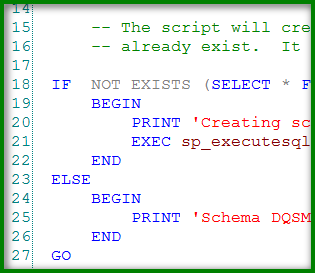Did You Even Know There Were Missing Index DMVs
 Monday, November 2, 2009 at 9:07AM
Monday, November 2, 2009 at 9:07AM In the vain of full disclosure I am not that great a dba. My skills are really on the development side. The Dynamic Management Views or DMVs have been around a while. I have on occasion made use of them but usually through the suggestion of others. I just haven’t spent much time looking at them or trying to understand their value. It is yet another whole world inside SQL Server.
As a Data Architect and a T-SQL developer I am acutely aware and concerned with how the structure and code techniques around persisting data affects performance. We are better at our jobs when we understand what's over the fence in someone else’s yard. You will be a better developer if you understand how to manage the storage of data while optimizing for performance. There are a lot of factors. It is a specialty of its own in SQL Server.
Laerte Junior has a post over at Simple-Talk that looks specifically at DMVs that are used for identifying missing indexes. Personally, I have never had much significant success with the Index Tuning wizard. Laerte has some examples of working with the data provided by the missing Index DMVs that look like a good place to start when you need to start tuning Indexes for performance.
In his article he does point out that there was some ugly code that really could be better optimized. He was constrained by time so he needed so fast improvements. This is where the Missing Index DMVs came into play. I still stand by my principles of writing good code and not just throwing your performance issues over the fence to a dba to fix. So if Laerte was able to get real benefit from tuning indexing imagine where he would be if the code was optimized too.
Reducing I/O with the ‘Missing Indexes’ DMVs
http://www.simple-talk.com/sql/performance/reducing-io-with-the-missing-indexes-dmvs/?utm_source=simpletalk&utm_medium=email&utm_content=MissingIndexes20091102&utm_campaign=SQL



